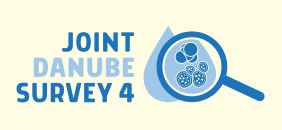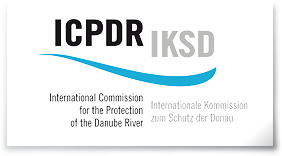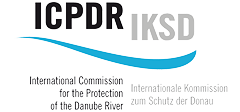Full Reports
Recording and assessment of hydromorphological changes 2013 - 2019
by Ulrich Schwarz & Alexander Höbart (Data Collection Tool)
According to the decisions made in the HYMO Task Group the assessment prepared for the Joint Danube Survey 3 (JDS3) in 2013 (Schwarz, Holubova, et.al. 2015) should be updated by 2019 for JDS4. This concerns the update of the continuous survey of 241 sections of 10 km length, according to the agreed methodology (CEN Standards from 2004 and 2010) and comprises the overall and WFD 3-digit assessment of the hydromorphological features for the navigable Danube from Kelheim (rkm 2,415) to the delta (rkm 0 at Sulina branch).
Under the changed JDS4 framework conditions, with a more active role for national authorities and
individual countries, the continuous assessment focused on the update of the HYMO assessment of the predefined 10-rkm-segments with regard to changes (deteriorations , improvements) of channel, banks
and floodplain. The data collection and assessment was performed by national experts doing investigations (deskwork) supported by a consultant and the ICPDR Secretariat. For this task, an online data collection tool for the changes and projects was integral part of the JDS4 data collection portal.
The data collection started in early 2019 and comprises the full monitoring period from summer 2013 until summer 2019.
Macroinvertebrates (Full Report)
by Miroslav Očadlík, Margita Lešťáková, Béla Csányi, Emília Mišíková Elexová, Marek Svitok, József Szekeres, András Weiperth & Momir Paunović
Benthic macroinvertebrates were sampled by national experts during the JDS4 campaign in the first weeks of July with five different sampling approaches. Samples from Multi-Habitat Sampling (MHS) were completely analysed and used for Indicative Status Assessment (ISA). National experts with help of external experts processed and identified MHS samples according to JDS4 MZB Methodology. In the majority of cases, only one side of the river was selected for sampling, though at transboundary sites, both sides were usually sampled. In total, 484 taxa were found belonging to 19 higher taxonomical groups, 394 taxa were found in the Danube River and 287 taxa in tributaries. For definition of water quality, the Saprobic index and Slovak Multi-metric Index were used for indication of responds of macroinvertebrates assemblage to both effects of pollution and changes in hydromorphology. A brief discussion is given about the sampling efficiency of additional sampling methods concerning the successful detection of Unionidae mussels and Decapoda species.





.png)